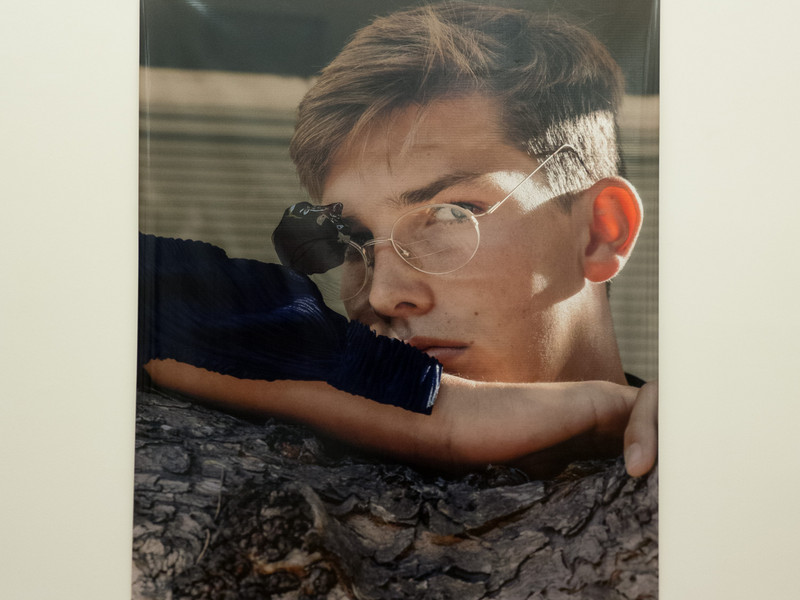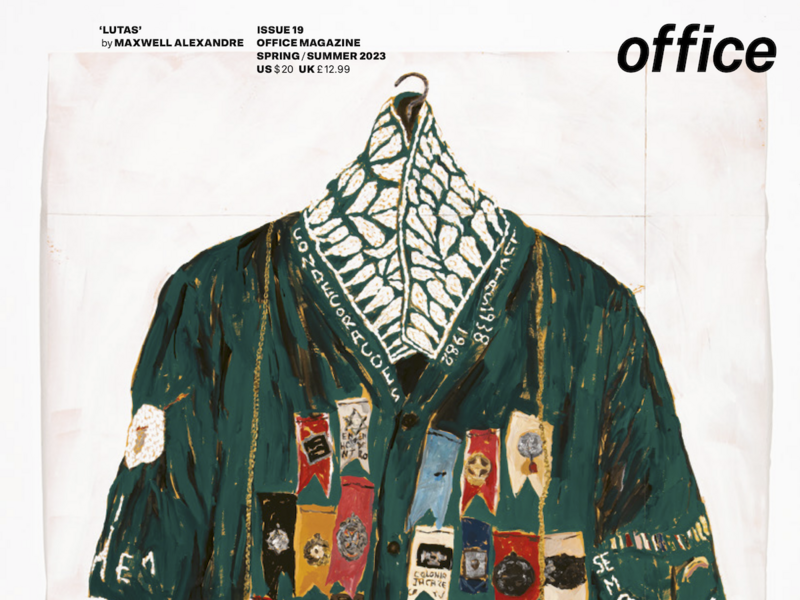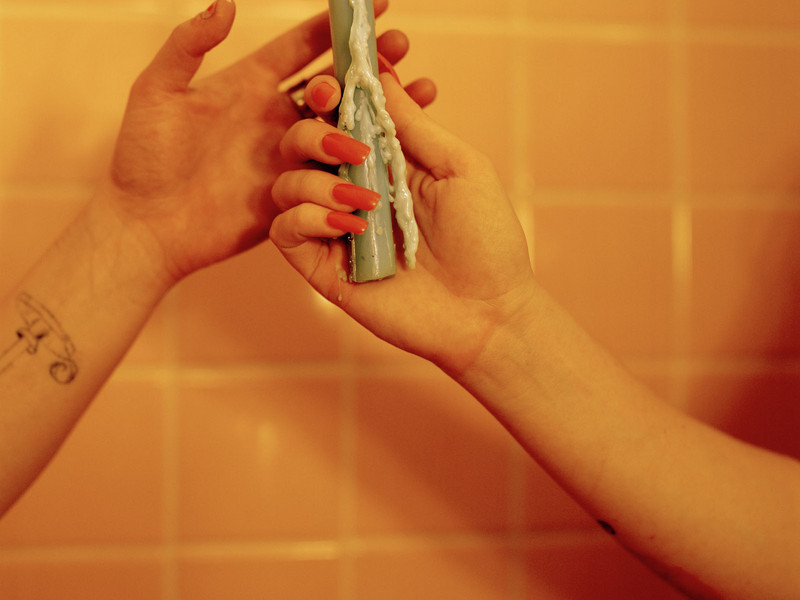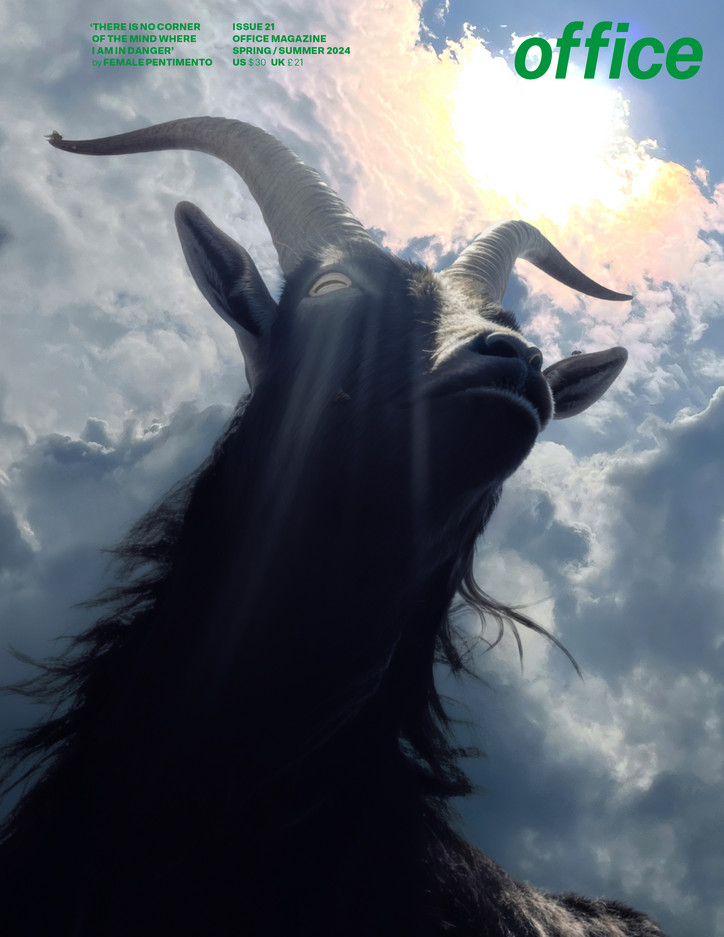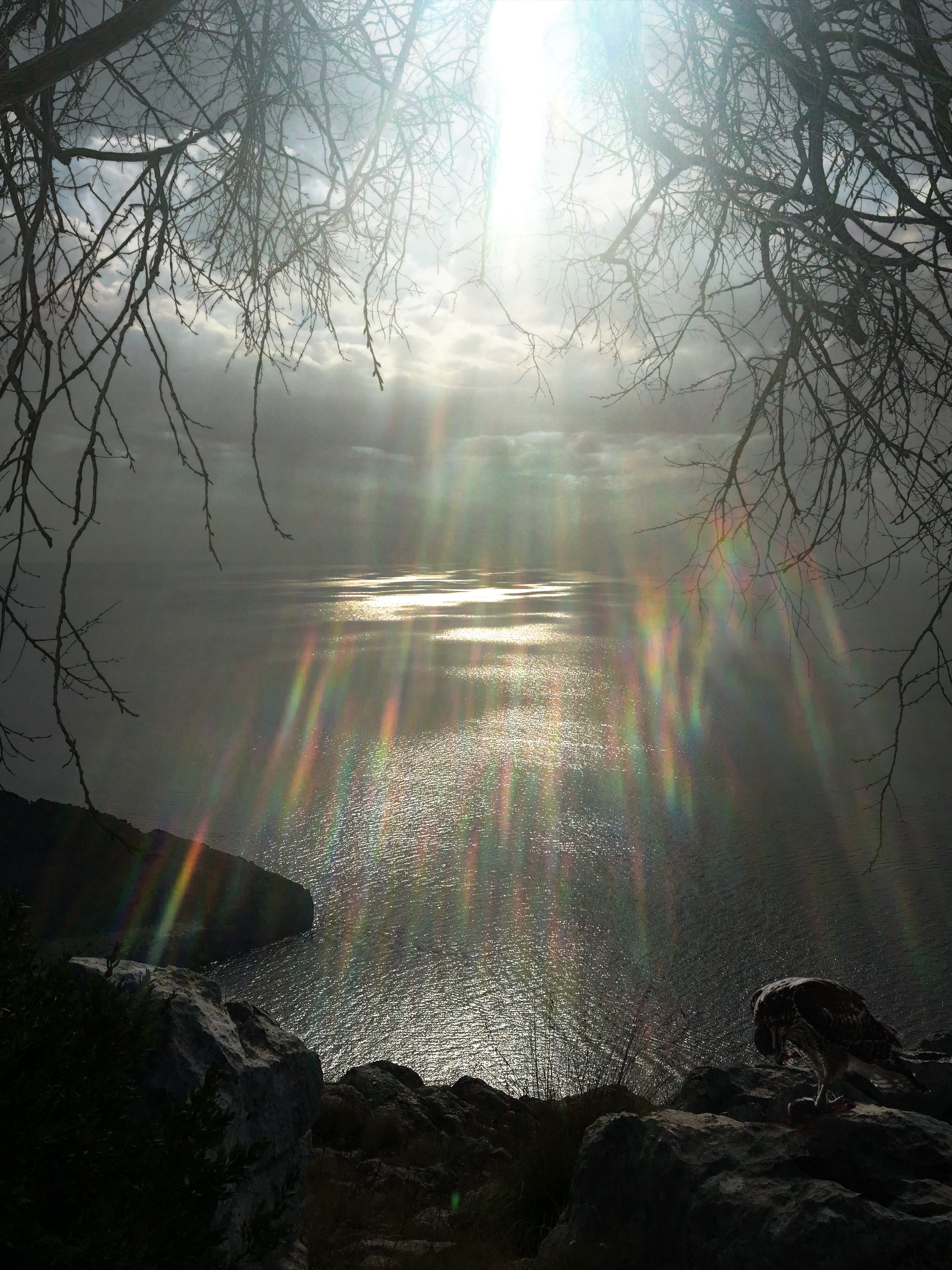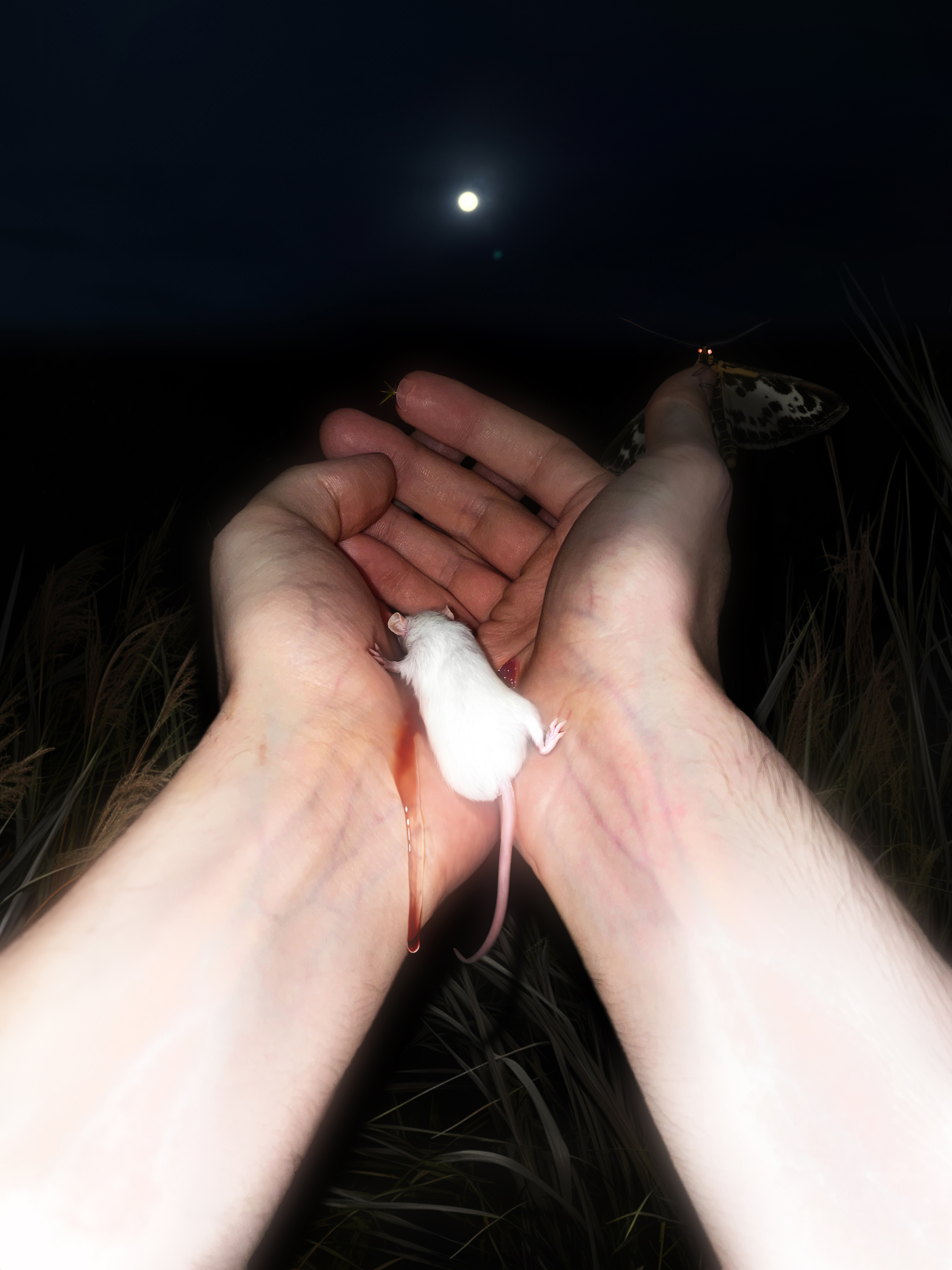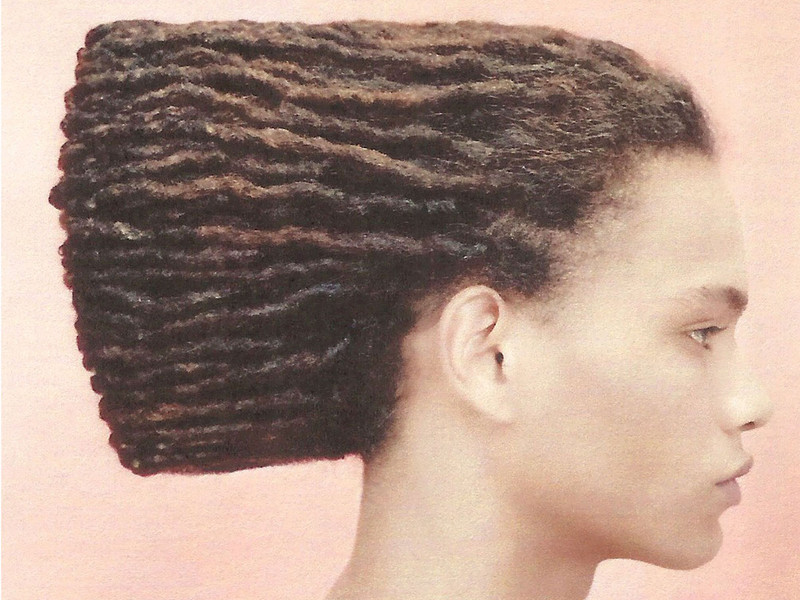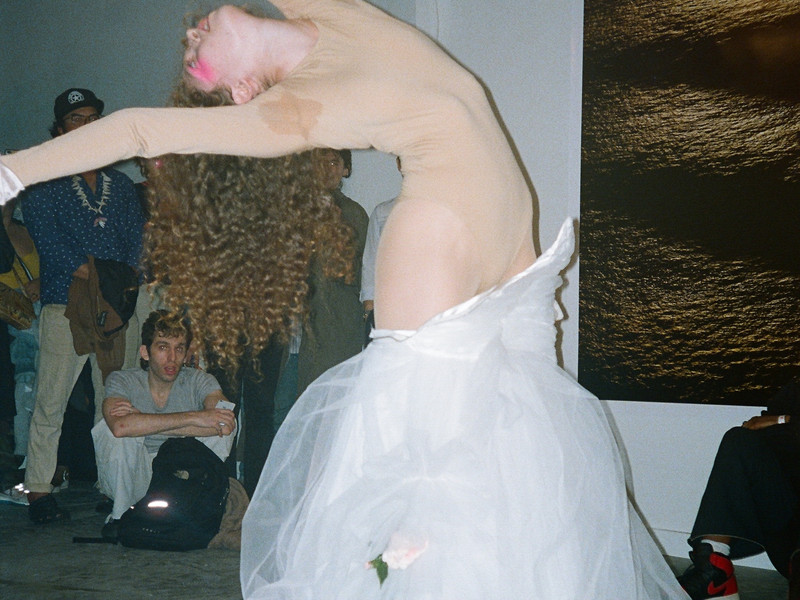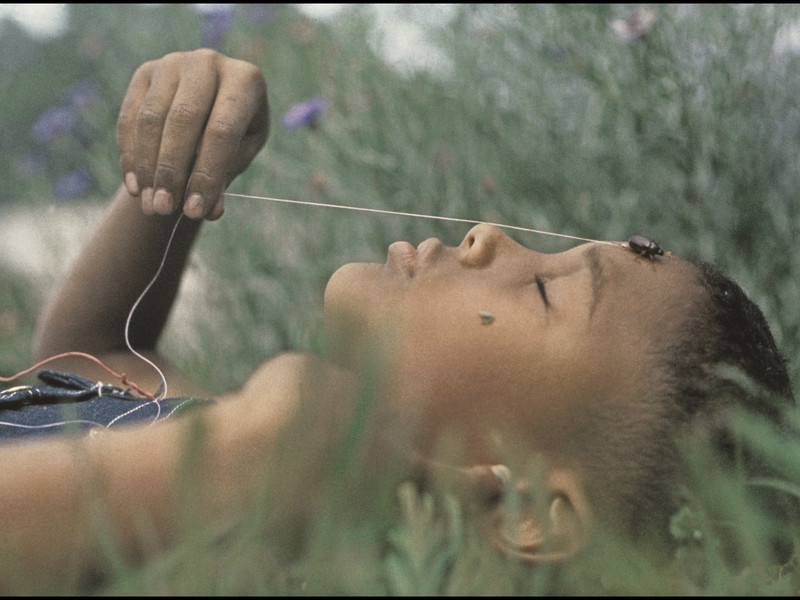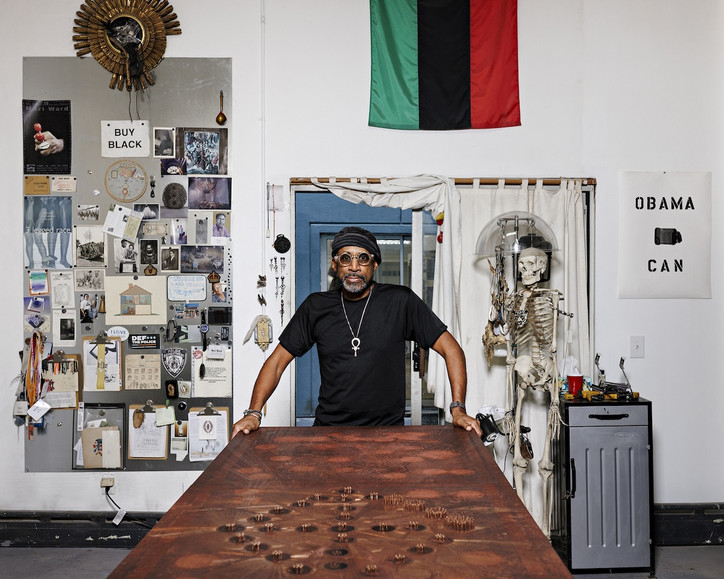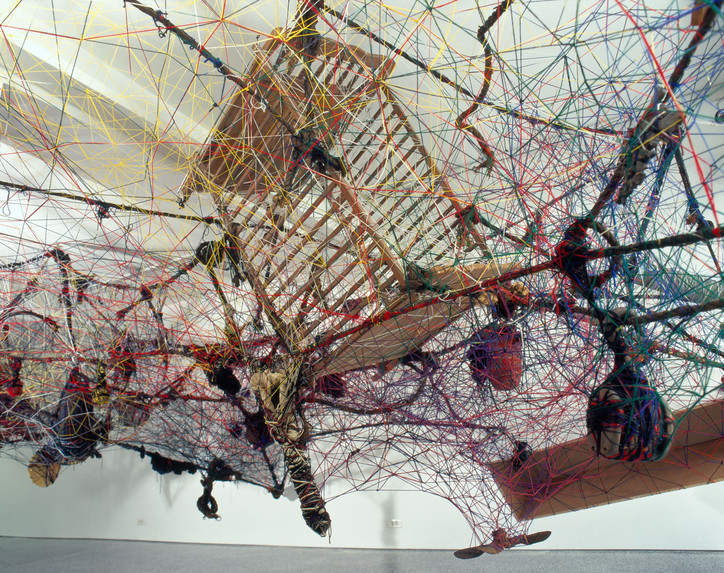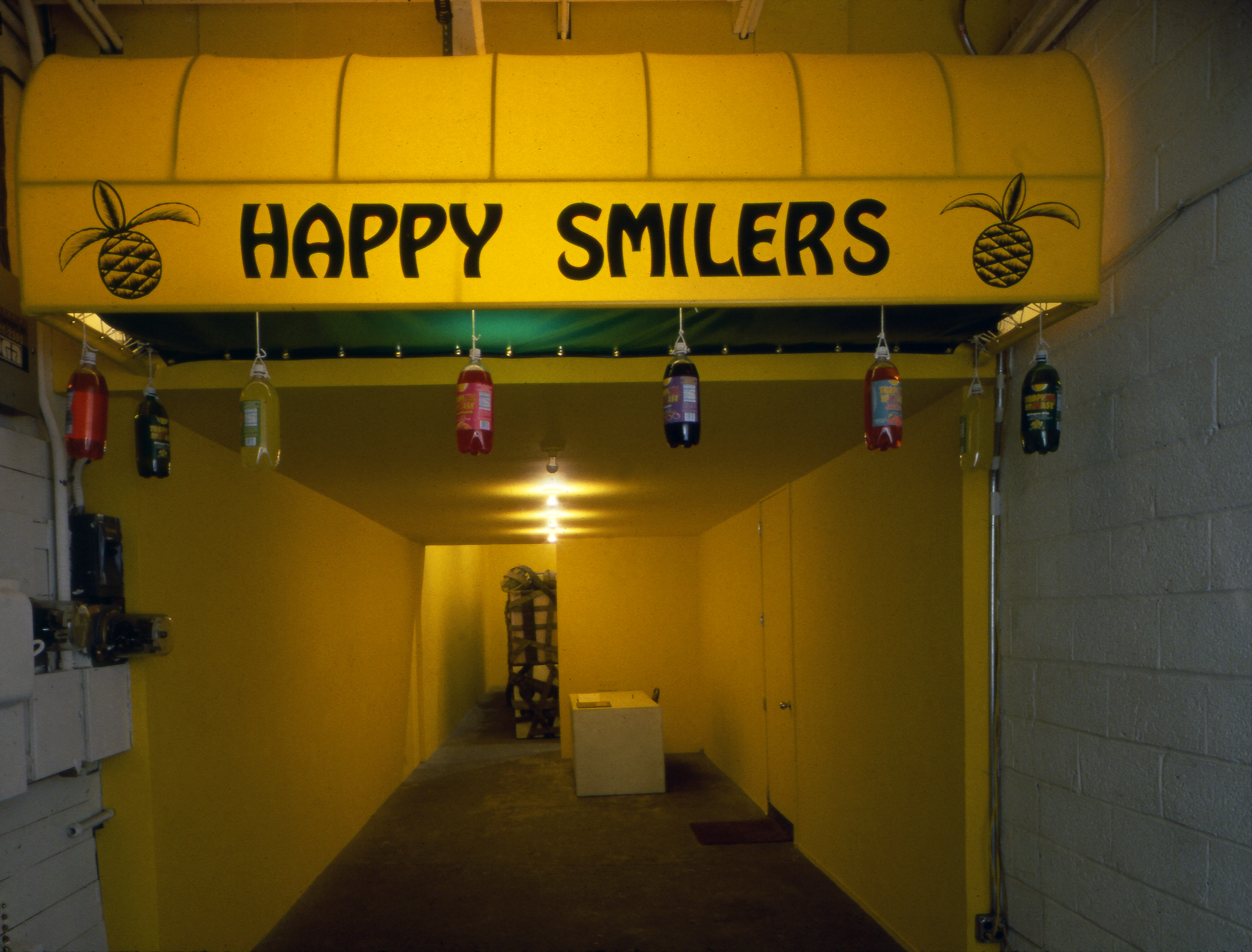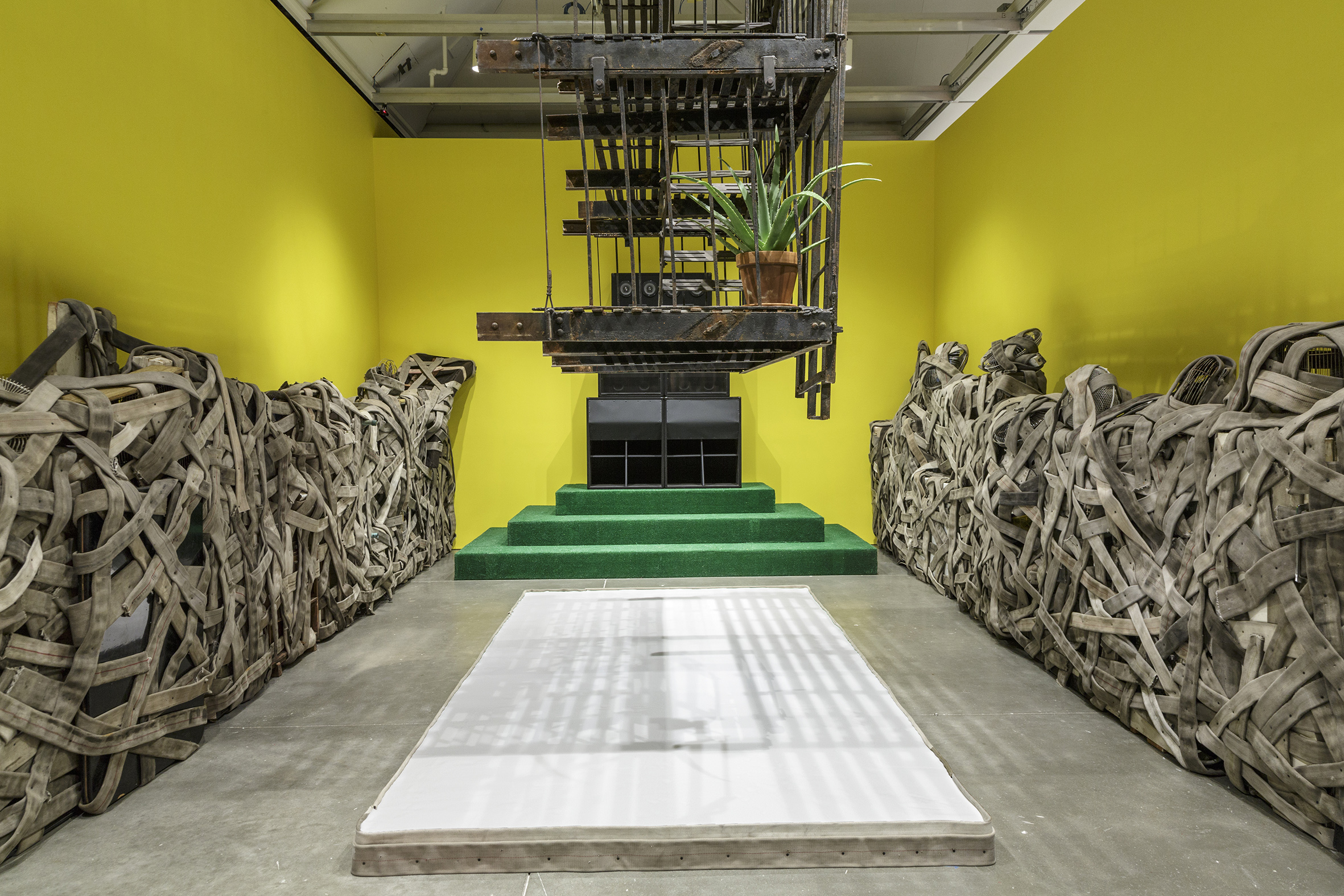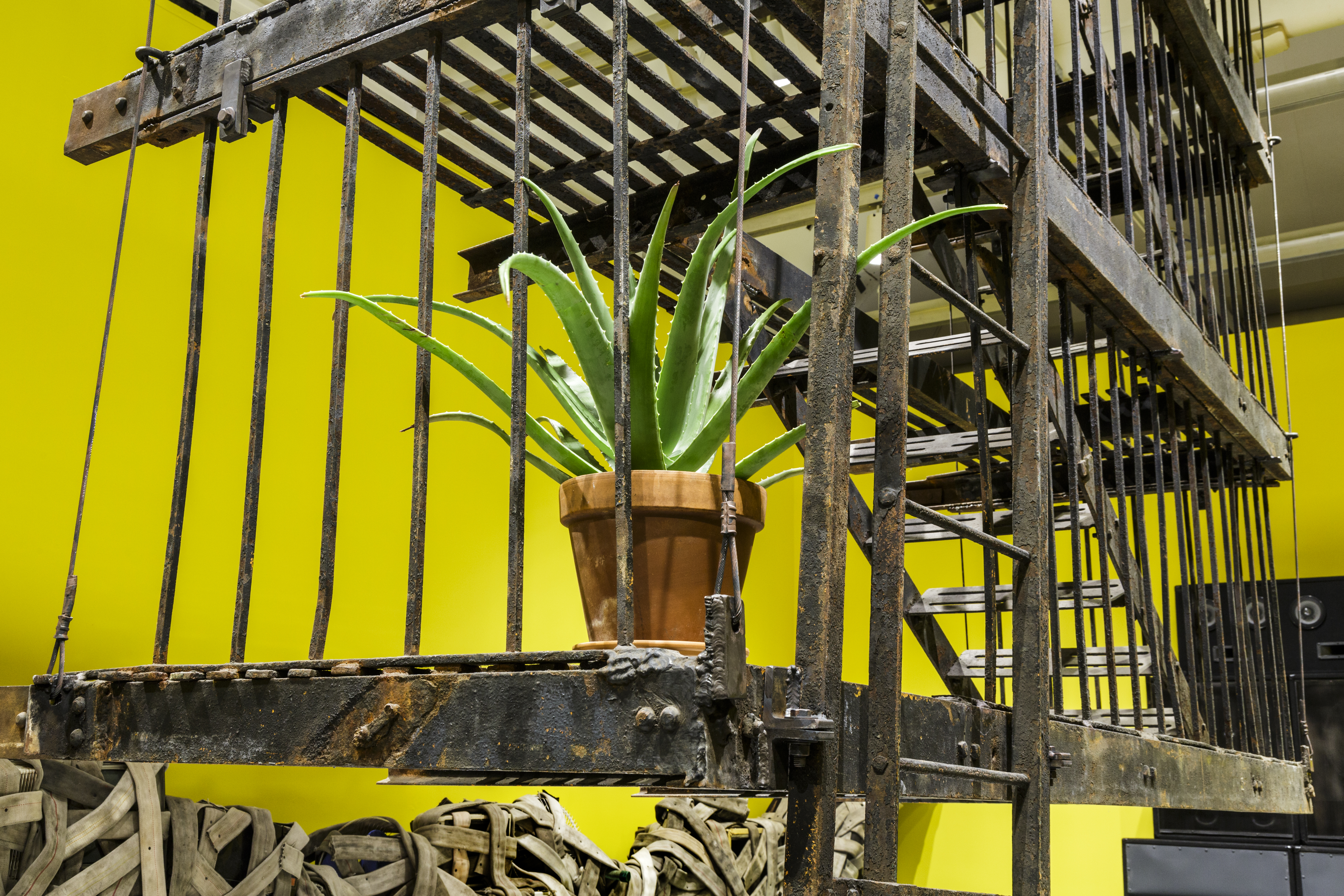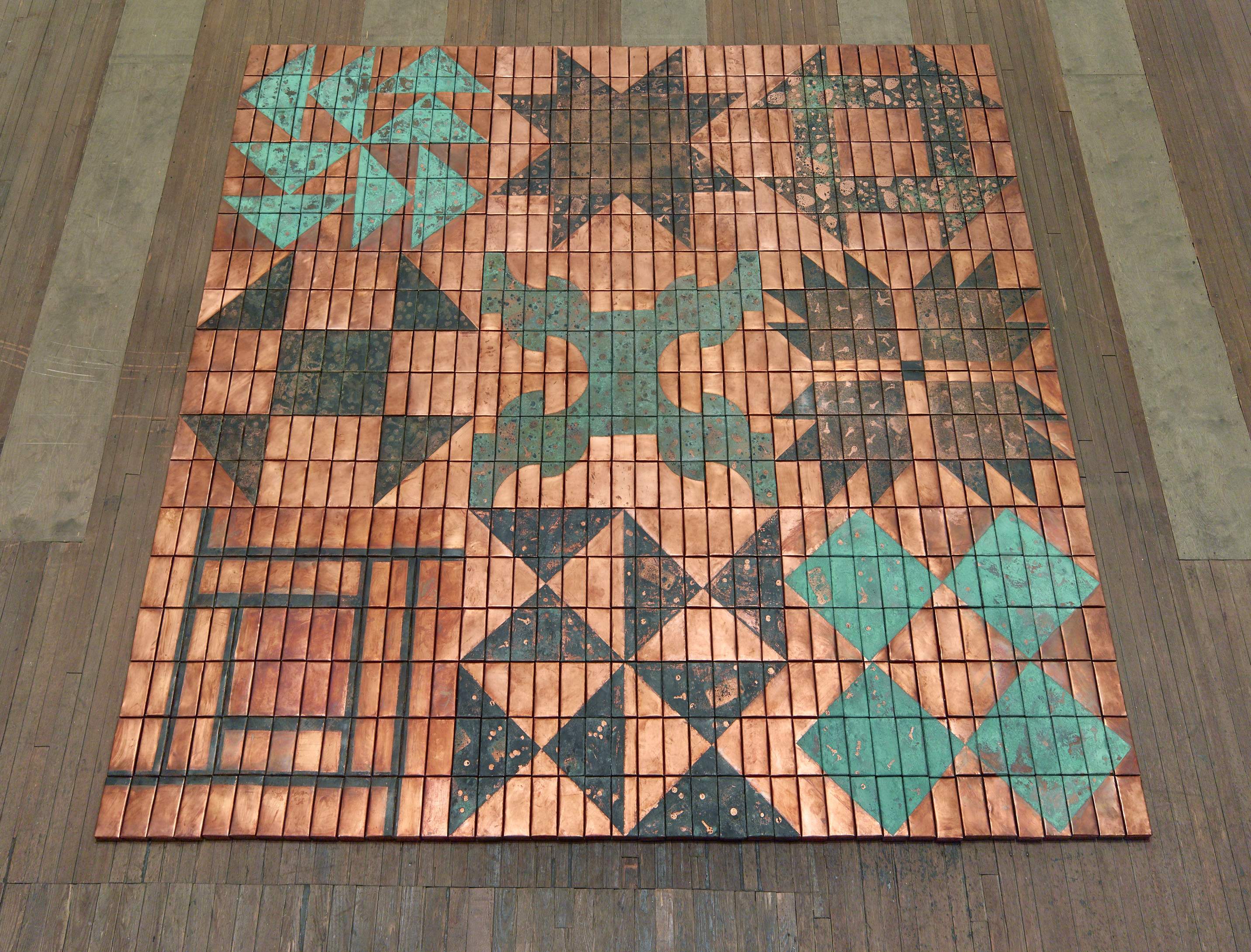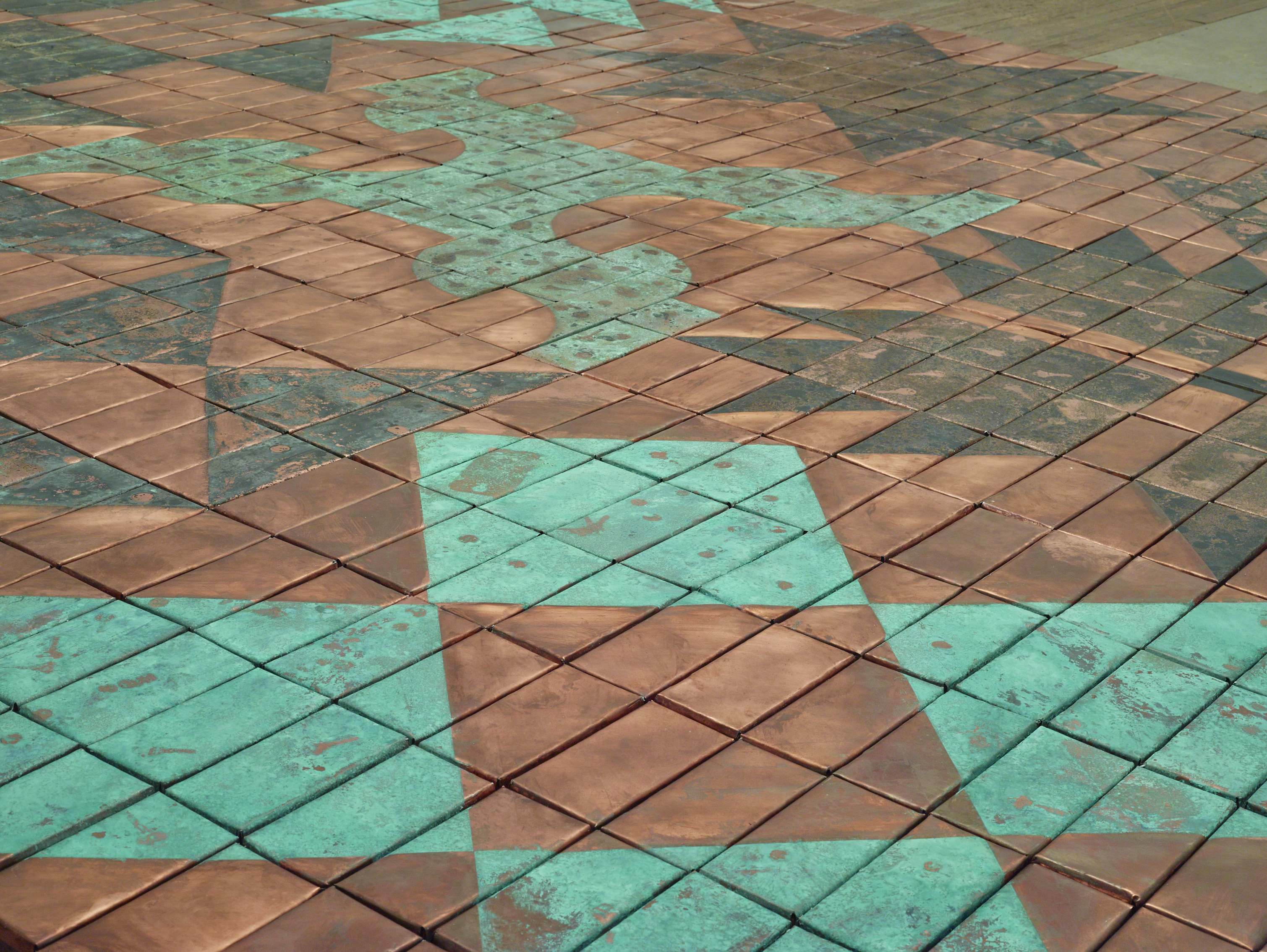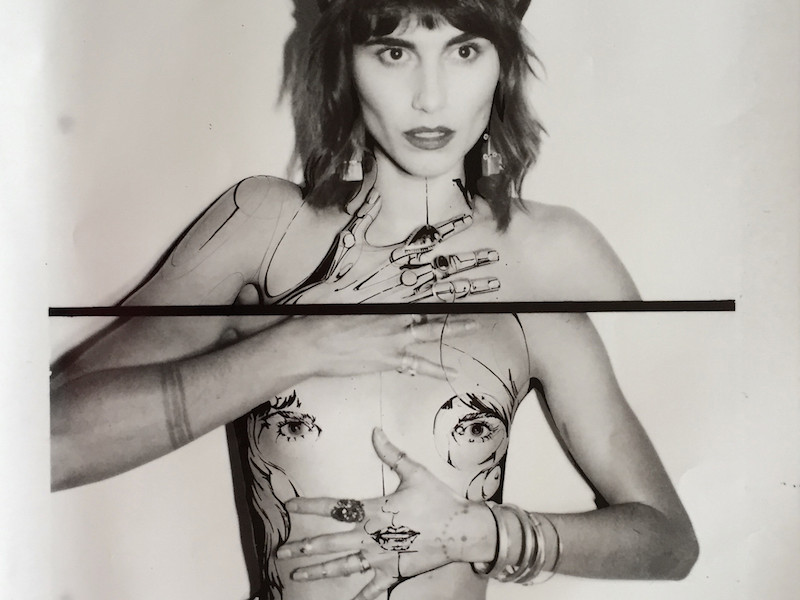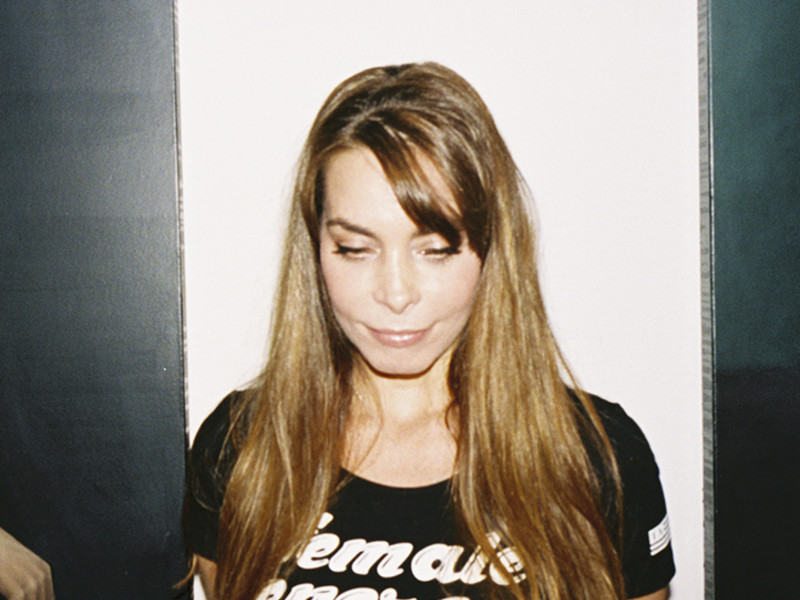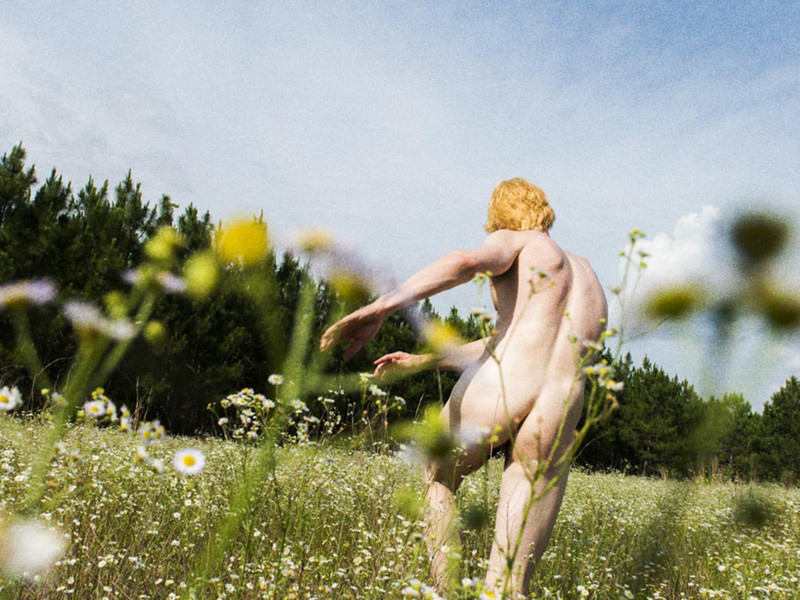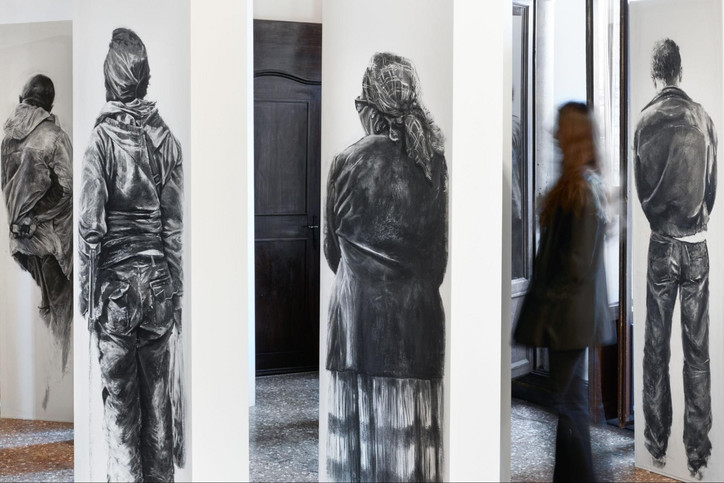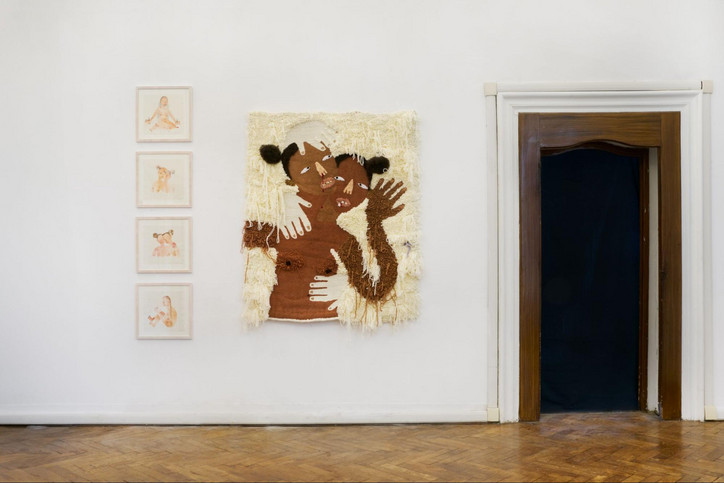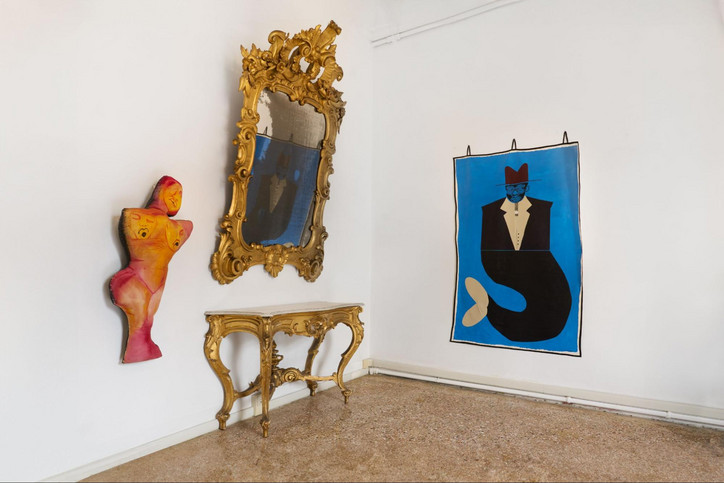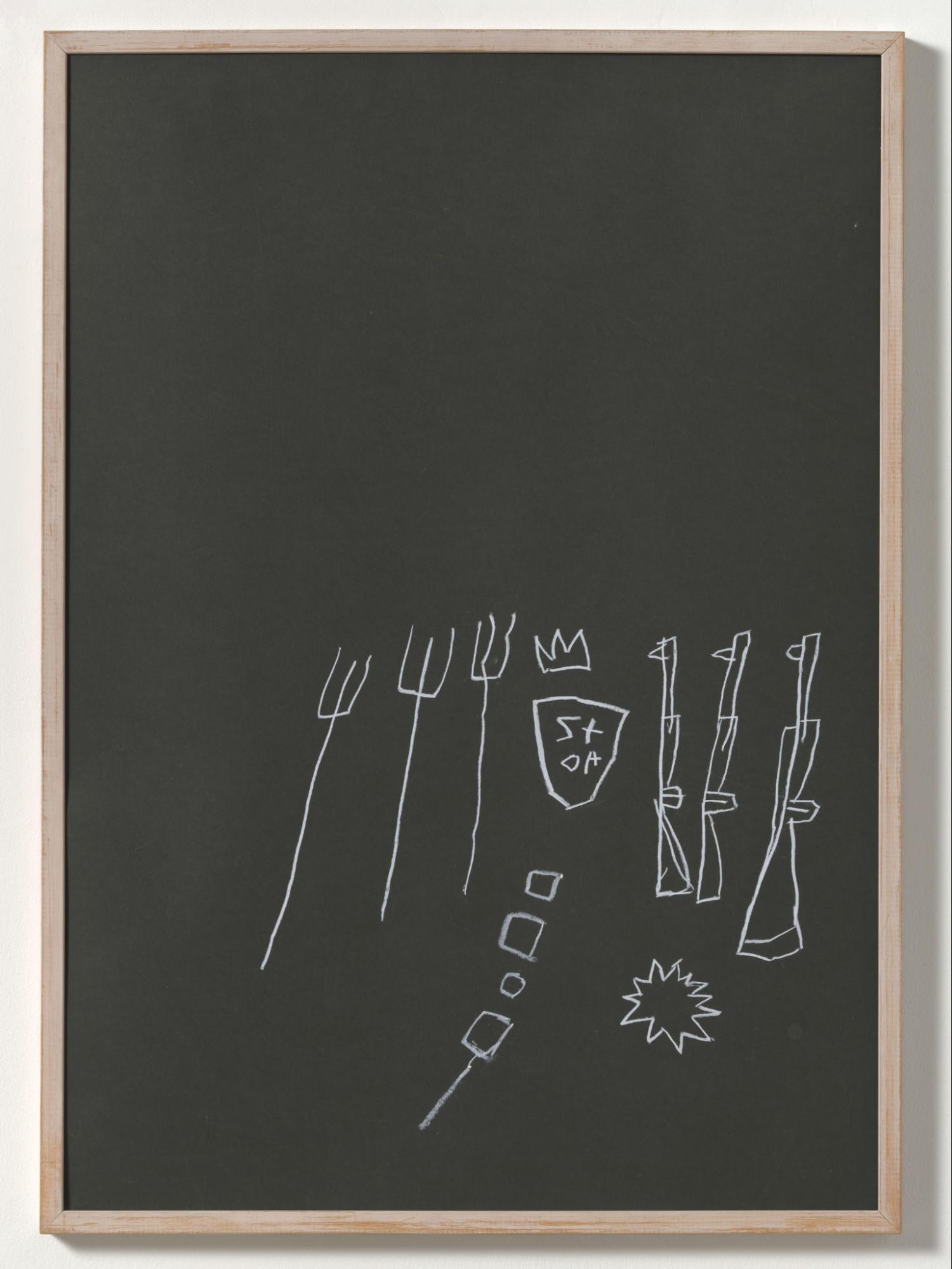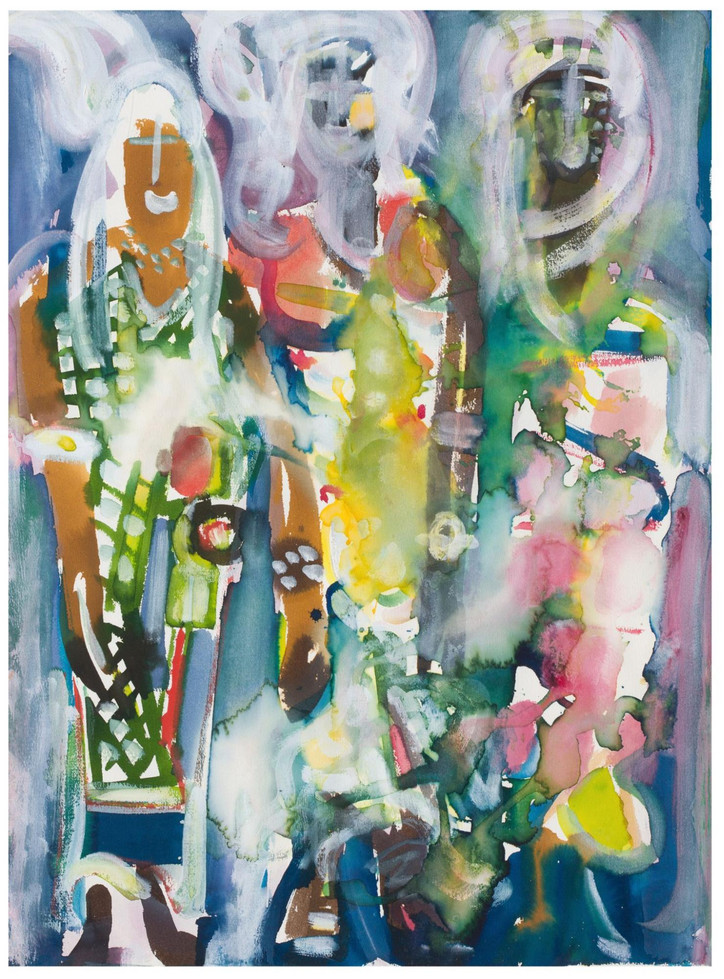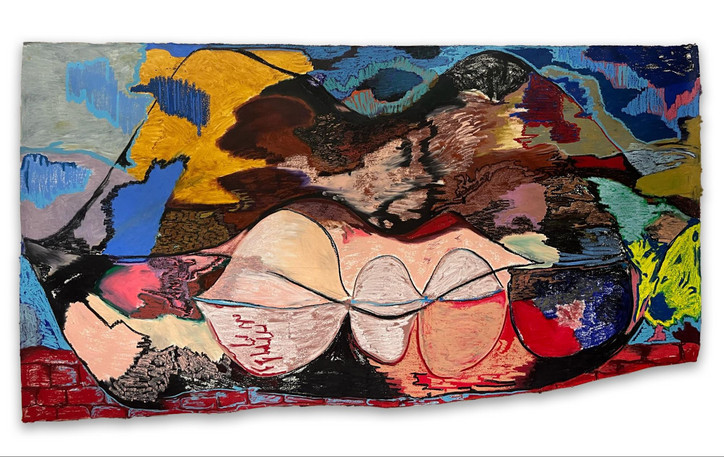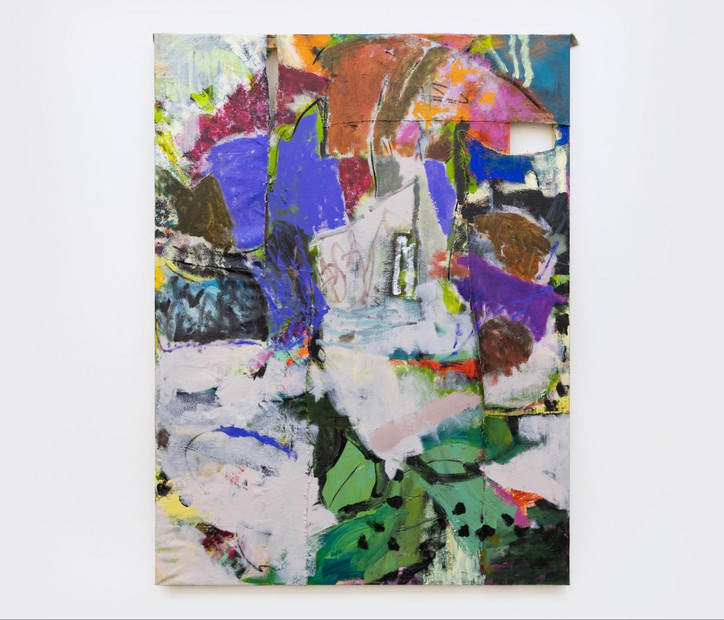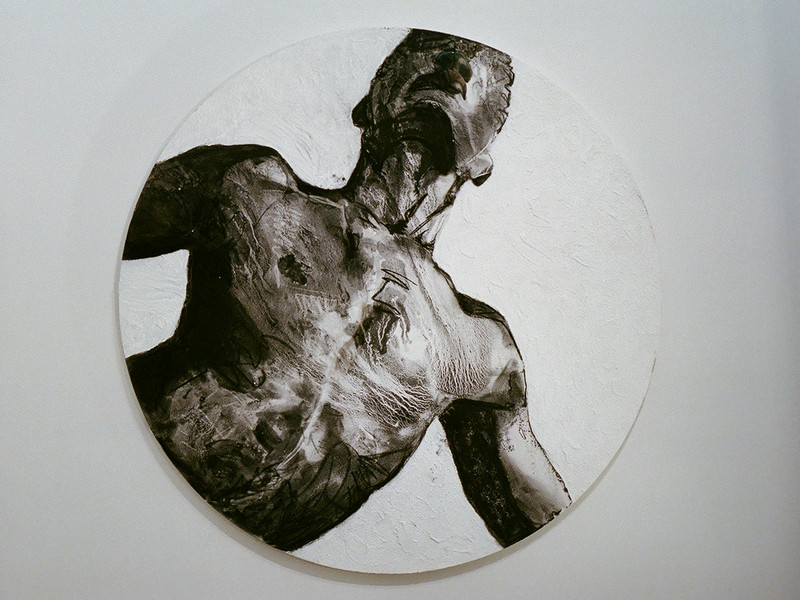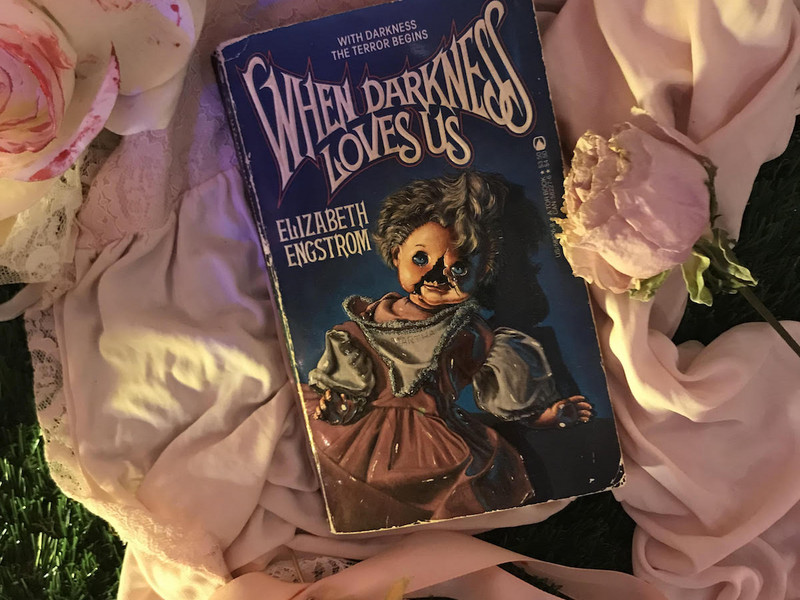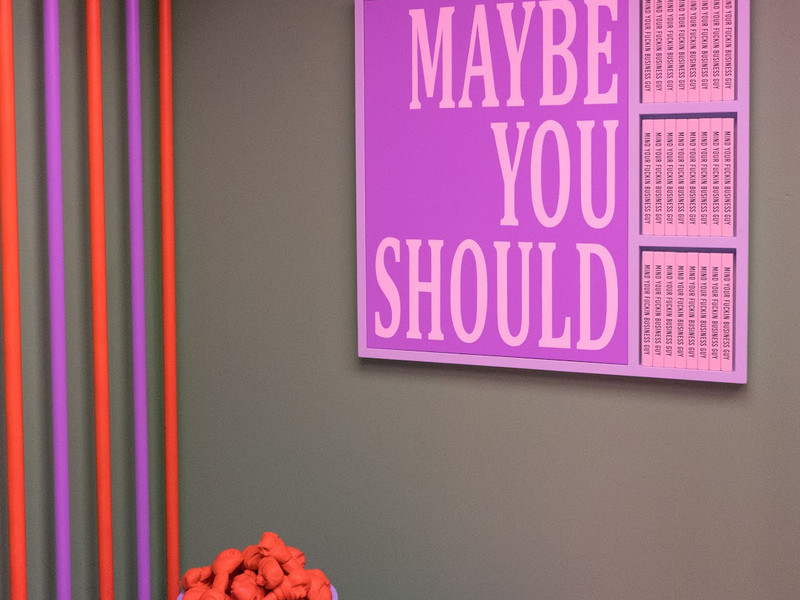Caleb Hahne Quintana on 'The Salt of Two Seas' at Newchild
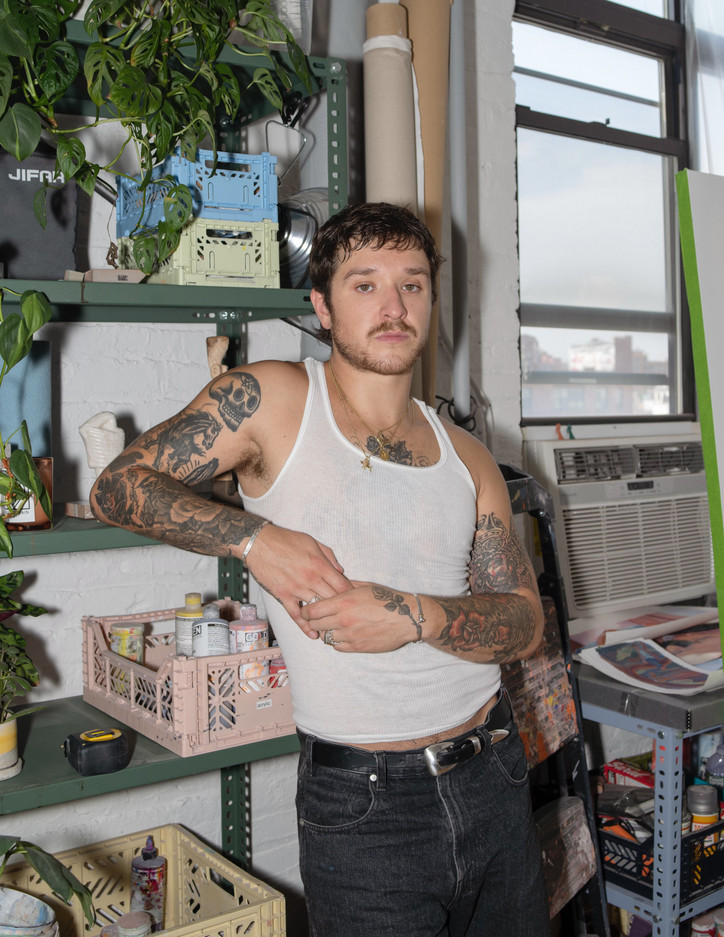
What was your thought process in organizing this show? I’m curious to know how you thought the artworks would interact in the space.
My practice requires a lot of emotional labor and research, so doing a solo show is a pretty arduous process that I’d prefer to spend at least a year on. Considering the turnaround time, I wanted to use this opportunity to work with other Latino artists who are invested in their practice in a way that's similar to mine, whether it be through land or figuration. Diego, one of the directors of the gallery who is Colombian, was also really interested in this language in terms of what it means to bring these artists to a port city like Antwerp, known for trade, diamonds, and printing.
I felt that that was an opportunity for an interesting conversation to happen there, especially because there’s such a rich history of 15th and 16th-century Flemish painting with Bruegel, Rubens, van Dyck, and others who have controlled that region. I asked myself, How can I bring this outside language of the desert, controlled burns, landscape, and migration into such a place? Esteban and I come from similar parts of Colorado and our families have similar kinds of migration patterns from Mexico up to the southwest. The entire team at Newchild was really helpful in gauging how we could talk about migration in a place like this.
Where does the title of the show come from?
It’s based on a painting I made in 2022 called I Am the Salt of Two Seas. That painting is the convergence of me being half Mexican and half German. Well, the German part is funny. I never know how to say that I’m really not German in any way. I'm very Mexican American, very Chicano.
I was in a show at the Denver Art Museum two years ago. That was the biggest Latin American show that they had had at that time. My friend Raphael, who curated the show asked me what I saw happening with a lot of Latin artists. And I think that there are these expectations for South American, Latin, and Chicano work that are really contrived. These artists are expected to perform, and I just see so much amazing work happening from individuals that aren't strictly tied to their identity. And I think that it would be cool to make work that way.
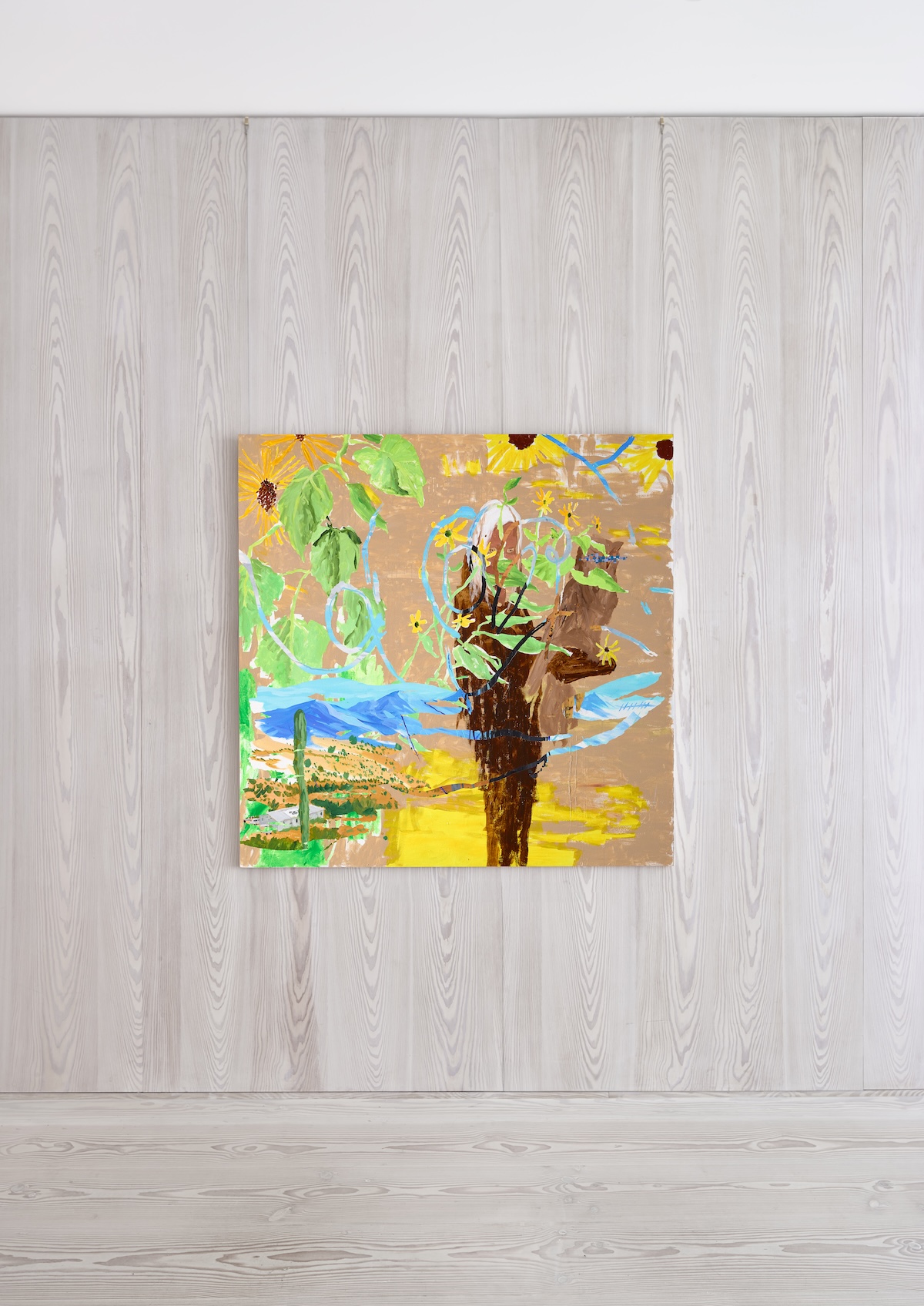
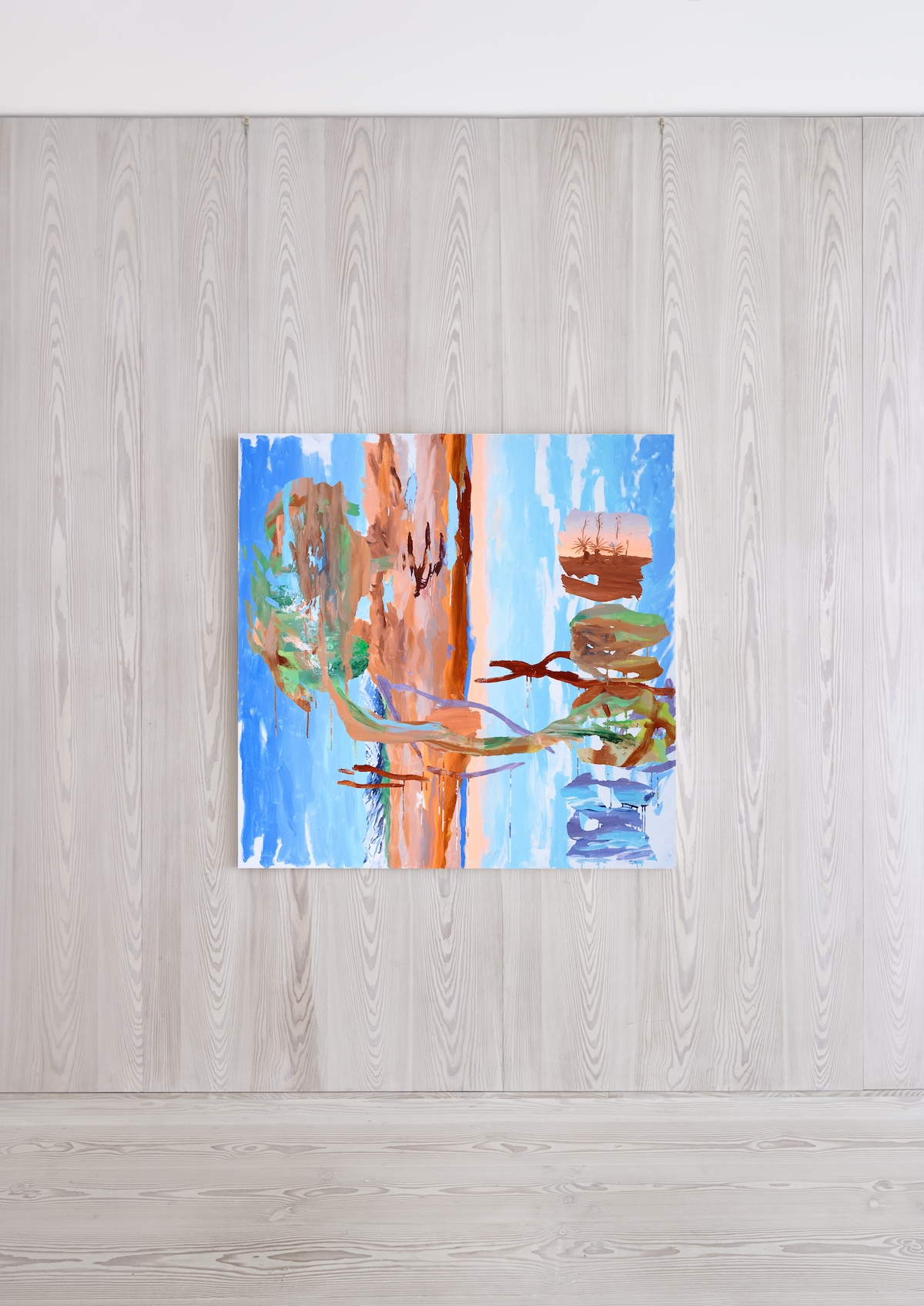
And I see that in Esteban’s works, which are all kind of landscape-based with his personal experiences blended in. His works, how vibrant and eclectic they are, also feel out of place against the pristine off-white walls in the gallery. It brings your attention to how rare it is for someone visiting this gallery to see this kind of work.
Exactly. I'd been to Europe a handful of times, but I had never been to Belgium, so when I got there to show this work, it made me that much more aware of the place that you're at. This desert landscape is very true to my core, to my being, and to my practice. Going to Antwerp which is ancient in a different capacity, it’s kind of bizarre. You're like, Wait, where the fuck do I belong in any of this? Especially making work and thinking, Okay we’ll see how people connect to this. And it’s been kind of a challenge in some regards, which is okay because that’s exactly what I wanted.
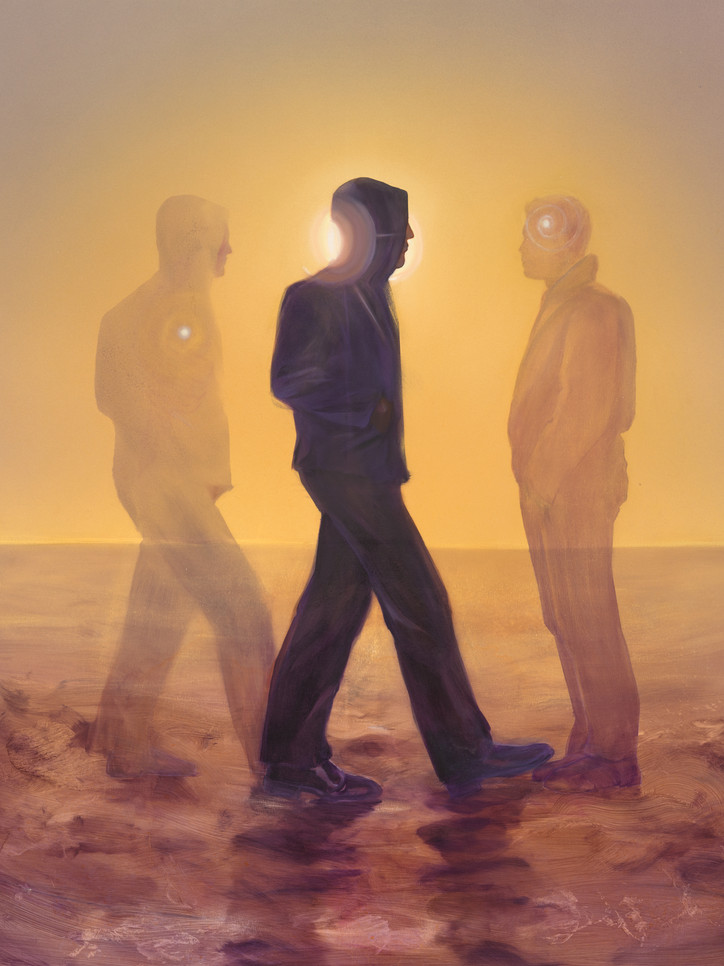
I want to talk a bit about the juxtaposition of these three bodies of work. As we said, Esteban focuses more on these landscapes, while Bernadette’s paintings depict moments between people. Then your work feels focused on this in-between space, whether that’s an apparition or movement, as in In Our Bones the Soil Secrets. You have this person in the middle of a footstep and these two other figures — one that could be their previous footstep or an ancestor and then another figure who could be a sort of successor. There’s almost this tension that emanates from this moment frozen in time.
That is spot on in many ways. In a lot of my work, that does seem to reoccur too: everything in between, there's always a step. I think that comes from my fascination and interest in storytelling and reading. I like this idea of something always being in pause. I'm even writing a short story right now, and it’s funny, I kind of started the short story in the middle and I have no idea how to start the beginning or how I'm going to end it, which relates a lot to my practice.
The title, In Our Bones the Soil Secrets comes from a poem I had written and the painting I did when I had just gotten back from Mexico. I go down there pretty often and we were in Arca Tierra, famous for these boats people drink on, but there's this whole other part of the canal that is rich in history. You go on this canal ride for 45 minutes and then they feed you a meal from this farm there. You also go super early in the morning.
When my family immigrated, they were in New Mexico and then Colorado. My great-great-grandmother was a curandera and whenever I go to Mexico, there's just this — not to sound too corny — innate connection to the landscape that other places haven't really granted me. Like I love New York, but I'm not a New Yorker, and I'm okay with that. When I'm in Colorado or New Mexico or Texas, all of these southwestern states, there’s this deep comfort that I feel there.
Whenever I go to Mexico, my grandmother’s like, Why are you doing that? We did all this to get here. And now I think its typical for anybody in our age group, this idea of Chicano revivalism, coming back to where you’re from, and this painting is almost a compression of all of those things.
This generation gets a lot of shit for being nostalgic, but I think the yearning for preservation and maintaining tradition is so important. And it’s very of this generation. So many of the 20th century’s art movements were focused on creating something new, now we’re navigating this postmodern state that seems past that. It’s less about being part of a movement and more so about expressing these personal experiences and narratives through the work.
Totally. And that makes me think of Denver and Aurora where I grew up. There’s this really famous Chicano poet from Denver named Corky Gonzalez. He was a professional boxer. We even have a library named after him. He has a really famous poem called “Yo Soy Joaquin”, essentially about being Chicano in America, which feels very to your point about this idea of a movement. Then there was Axis Mundo, this movement between the 60s — 90s of queer Chicano artists.
While these movements do exist, individualism is a bit more pertinent now. Well, I guess everybody’s story, like look at me man, I’m fucking white as hell. When people find out that I'm Mexican, that I speak Spanish, and see my family — not so much in New York but back home — they are always so confused. I always felt like I had to prove myself. Now I'm 31 and I still feel this incessant need to prove who I am, maybe not so much anymore, but definitely in my early twenties. In terms of my experience, my parents never married and I grew up primarily with my mom, who is married to a Mexican man who has been there my entire life. Like my family calls me guerito, both of my parents were Latin. Biracial sounds so antiquated but being a white Mexican kid with two Latin parents was my whole identity.
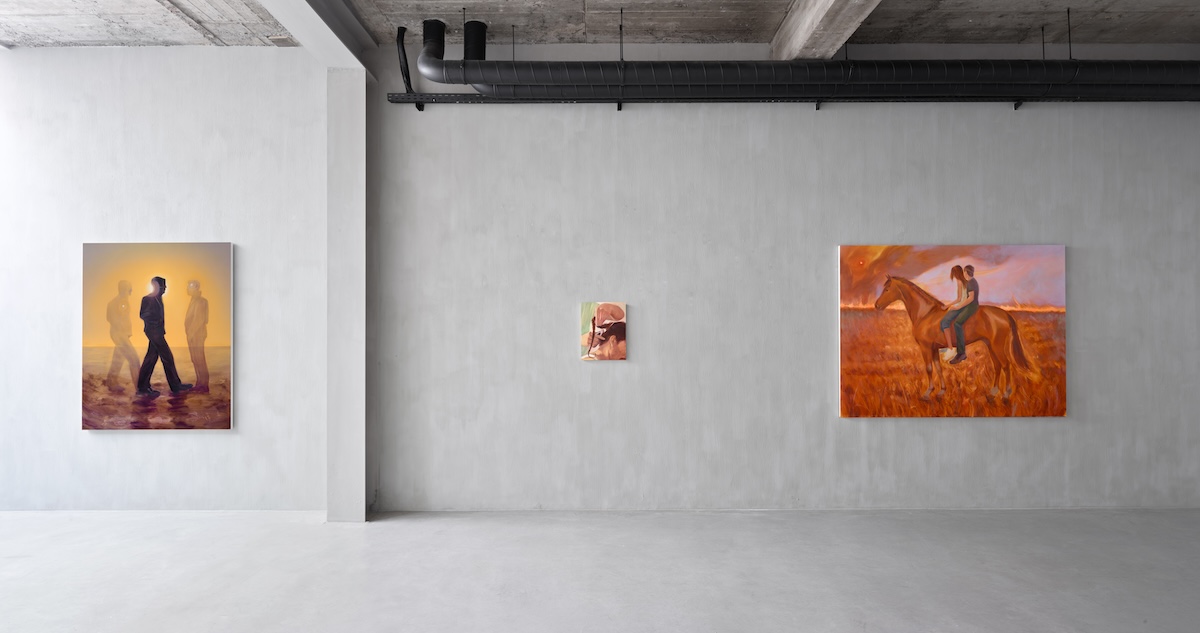

You’ve essentially been navigating this dual existence your entire life.
And even still. I've actually grown bored talking about it and I don’t feel like I need to define myself anymore. I also think that definition was based on white people's comfort, whereas whenever I meet Mexicans, especially in Mexico, nobody fucking cares. My Tia has red hair and blue eyes, and she was born and raised in Mexico. It’s a very American expectation.
Have you interacted with anyone viewing the works at the gallery?
I had an interesting conversation with this woman from Spain, and I don't meet a lot of legitimately Hispanic people. It was a nice chat. She was like, Are you Spanish? And I said no, but her term for Spanish was all-encompassing, while here in the States you don’t say that. I think an uninformed person might say Spanish, but for the most part, it’s like, Oh I’m Chicano, or I’m Dominican. There are all these sub-sects.
Right, and I relate to that because I’m half Dominican and Bangladeshi, but I resonate more with my Dominican side.
Yeah, and as far as the response to the work, I think that because I look the way that I look, and I've experienced this for a lot of my life. A lot of people expect me to be the spokesperson for Mexican people. And I just can't speak to that experience at all because I'm white, and I'm abundantly aware of that. So when there’s an expectation for my work to be about a certain thing, it’s not always the case. There’s a painting in the show — probably one of my favorite paintings actually — of me cutting my friend Rogelio's hair. He’s also Chicano. I’ve known him for like 10 years, he’s recurred in probably five of my paintings. I think he’s a really good stand-in for me in a lot of ways. He had these really long braids and hadn’t cut his hair in 10 years. He moved to New York recently and the second he got off the plane came to my house and asked me to shave his head. I took a video because it’s crazy to be the person to shed this person of 10 years of their life. The still from the video captures exactly what you said before, the tension right before I cut the braid.
To me, that painting is a conversation about intimacy, bonding, and masculinity that has nothing to do with being Chicano. There's this expectation or this idea that the work has to be very literal about who I am, but it just so happens that these are all paintings about where I'm from and who I know which just so happens to be bridled with this amazing history. I could be Chicano and be from Iowa, and I wouldn't have the same relationship I have with Chicano activism, food, or culture because Denver and Aurora where I specifically grew up are so rich with Mexican-Americans.
Artists are sometimes automatically expected to engage with identity politics, but it doesn’t have to be that. When I look at your work I think of reading a novel and being given certain snippets or details about a moment and having to piece those together to bring the image to life in your mind. I’d also like to point out how these specific scenes wouldn’t be found in a cityscape.
Yeah. It’s funny too. When I first moved to New York, my work was already very rooted in the southwestern landscape. People asked if I was going to start painting New York scenes. I guess as a painter I felt I had this duty as an observer and recorder to do that, but I realized pretty quickly that wasn’t my job. I'm not from here. I have no need to tell any of these stories because it's not who I am. Being from the Southwest, there's this affinity for a big city where you want to know what that's like, yet moving here made me much more aware and grateful for the abundance of the desert and the plains of the Southwest. It brought me closer to home in a way, and that's been a great gift of authenticity in terms of knowing who I am and who I'm not. I think if I moved here when I was a lot younger, I would've struggled with that because it's such an influential city. But as an adult, and I'm not saying this to be self-aggrandizing, there's a certain degree of awareness of things I just don't fucking care about. That just comes with time, truly, and I think that this city has granted me that experience.
Yeah, and there’s so much here. It can be overwhelming even as a native.
Totally, there are times when I meet people, and it's hard not to be influenced. You're just like, Damn, these people are cool, they’re into cool shit. Yada, yada, yada. Also, not to go off on a slight tangent. There’s been this revival in Cowboy Americana, especially with the Beyonce album and all these other moments in pop culture, which has been wild to see as someone who’s from that place and grew up going to stock shows where people are into that yee-haw shit. I was just in Texas for a wedding, for my childhood best friend, and I got to wear my cowboy hat again and I was like, Damn, this feels good. In New York, it would feel too out of place although I probably wear cowboy boots six out of seven days of the week.
It really has become a kind of spectacle in pop culture, even though something like cowboy boots has been popular for a long time. I do think it’s great that people are revisiting Cowboy Americana and revealing its Black, Chicano, and Indigenous roots. Renaissance Act II brings up a lot of specific references to Texan history that aren’t in the textbooks. It’s quite literally a renaissance of a culture that has been dominated by a white figurehead for so long.
To that point, my family were rancheros, vaqueros. My great-great-grandmother was a curandera and her husband, my great-great-grandfather, was a horse thief. He stole horses with Pancho Villa. All my family is from Colorado, Texas, all these different places in the south and southwest. My entire childhood, it’s just been like yes, cowboys are Mexicans, so witnessing this western renaissance has been kind of interesting. In Colorado, they have these horse competitions and dances, all the most extravagant ones were always Mexican. I’ve painted horses for seven years now pretty consistently because it’s just always been part of my experience. I would visit my biological father every other weekend and his house backed a ranch. One of my sisters used to ride horses for that ranch. I would wake up and there'd be horses in the backyard. Horses have been a vehicle for so many things for me, and they're mythic in this really kind of unreal way. As many horses as I've been on, every time I’m aware that this thing could fucking kill me. And that's crazy, but it’s amazing.
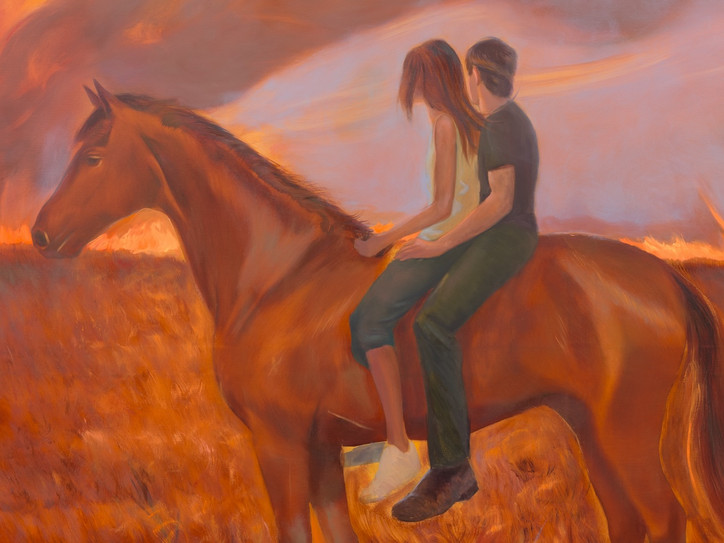
Right, and I sense this reverence and awe you have for nature even in your works. I’m thinking about the piece Hard Country. Those depicted are on a horse looking out into the distance but you can’t tell if it’s the beginning or the end of something.
Yeah, I really appreciate that read. The title, Hard Country, comes from a long format poem by Sharon Doubiago, who kind of traversed the West from Seattle all the way down and then back up into Canada. One of the things that I felt drawn to about that, and its kind of fascination with migration also comes from my experience of living in New York. I remember last year when there were forest fires in Canada, and the whole sky turned orange here, people were so freaked out. It's funny because that’s a common occurrence in Colorado. It gets incredibly dry so when lightning strikes forest fires happen pretty often. Every summer we had these apocalyptic ash storms where the sky would turn lilac and umber. It’s a weird thing to experience if you’re not used to it, sort of like snow. It’s had to tell in the photograph of the painting, but there’s this hard-cutting flame through half of the painting with the smoke billowing out into the left side.
There’s a mythical quality to it in that you can’t tell if the earth has been scorched already or if it’s coming toward them. My gallery director said that there’s no fear. And I love that calmness to the painting, this dreamlike quality of not being afraid of this fire.
Yeah, I see that, so what exactly inspired this calmness? Typically a fire wouldn’t provoke this reaction.
We have this thing called controlled burns that work similarly to the cutting of the hair — the positioning of these two paintings next to each other speaks to things done out of regeneration of cleansing. It’s kind of like split ends. You have to cut off the end of your hair so that it can grow back healthier. When the land gets riddled with invasive species, especially due to climate change — even something as much as a foreign grass can disrupt the pattern of a certain soil, controlled burns act similarly. When you burn off a top layer of crabgrass, new grass is born from underneath it, and I find that incredibly poetic. There are certain things that need to be done to maintain order.
It’s one of the truths of our reality, everything happens in a balance — that just speaks to physics even. It’s interesting when you see art capable of translating one of those universal truths. And a citizen from Antwerp might encounter this painting completely unaware of ‘controlled burns’.
Yeah, and it’s also an ancient practice. Indigenous people have been doing it for ever. There’s something meditative about the landscapes in the exhibition among my work and Esteban’s.
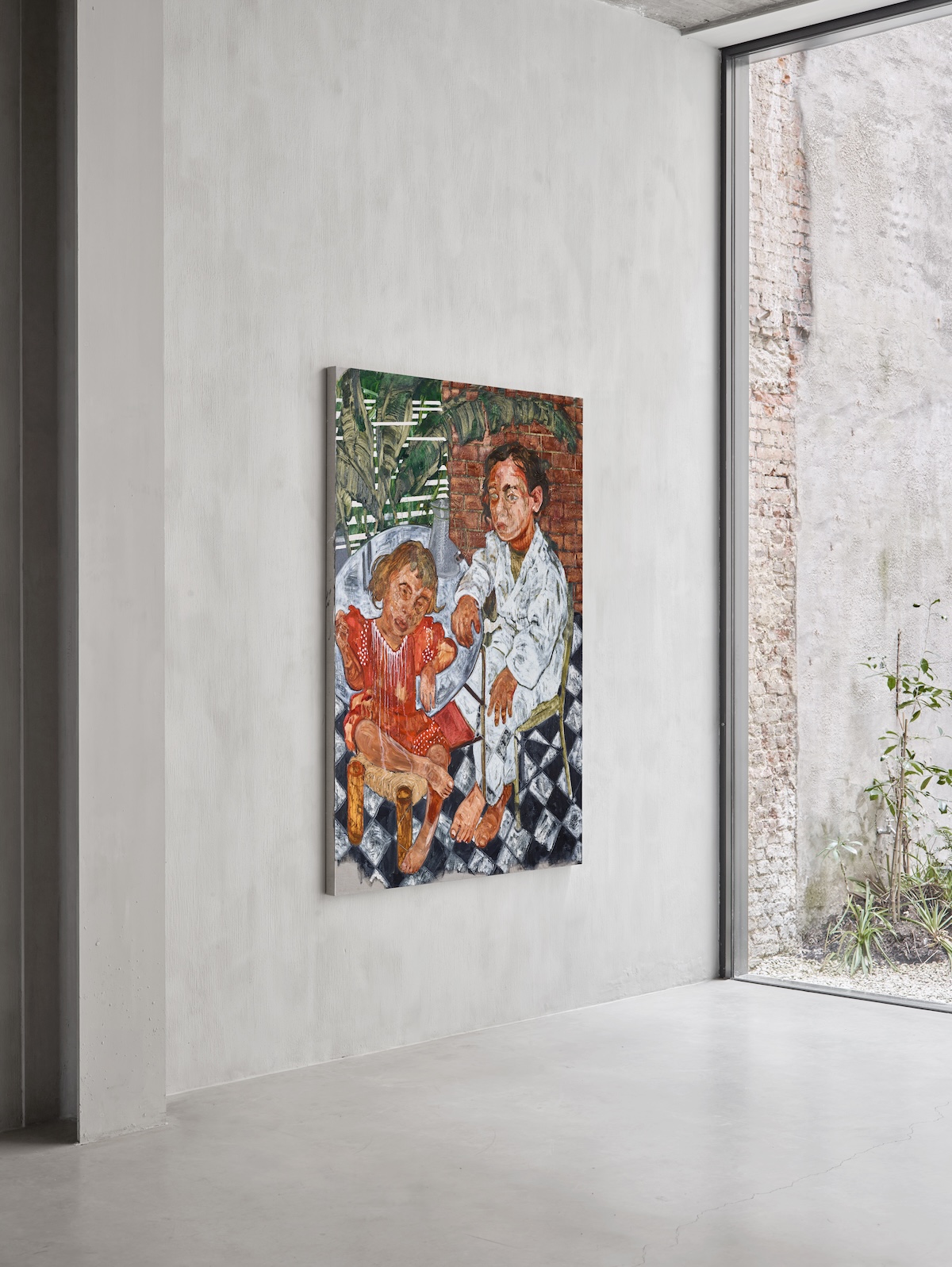
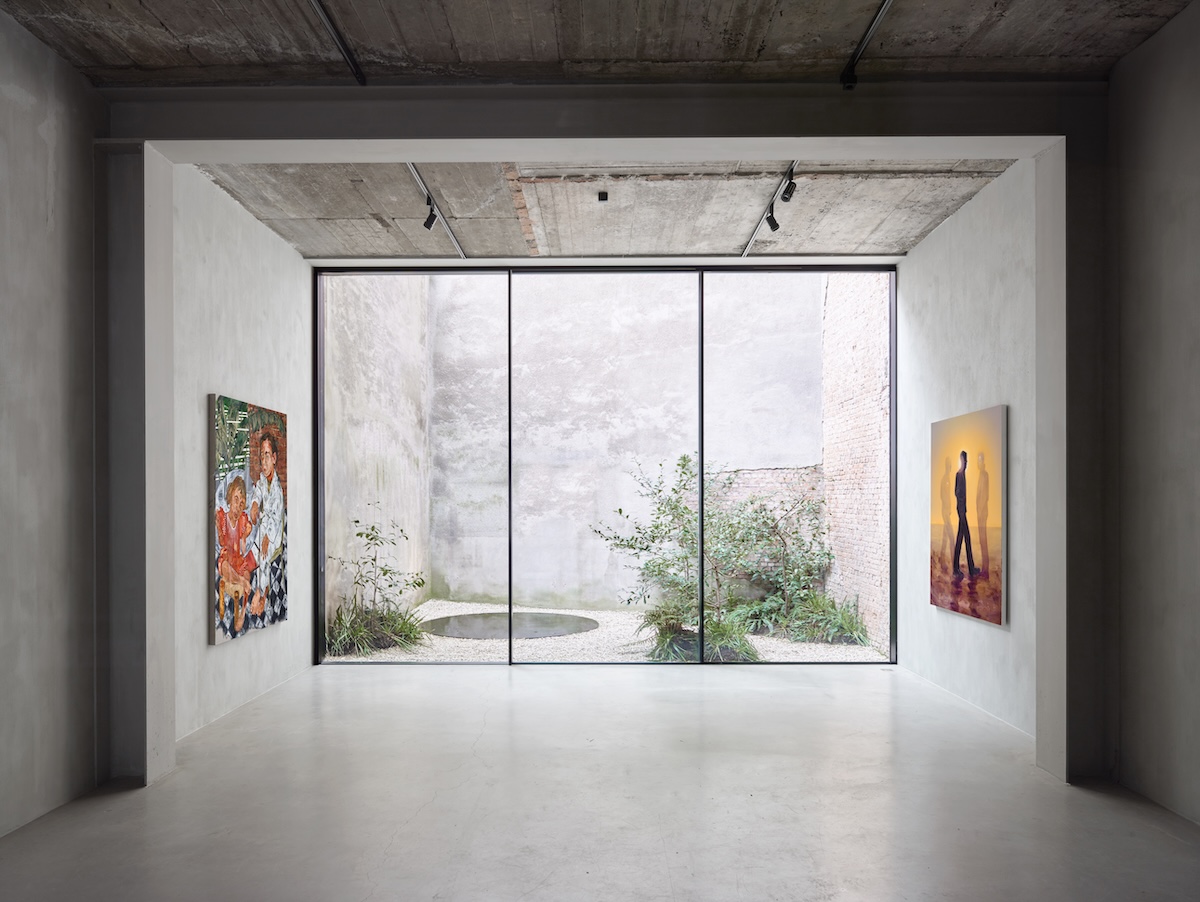
I’d love to speak about the intimate moments depicted in Bernadette’s works.
Yeah, so we wanted a couple more works from Bernadette, but she has a solo show coming up, so it was a little bit harder to get more and her works take a bit of time. The two people in her painting, if I'm not mistaken, are her nieces. What I really love about that painting is that one of her nieces is in a gi and the other is in flamenco attire. There’s this conversation between her work and mine across from it that speaks to this generational thing. In Our Bones The Soil Secrets speaks to past present and future in a particular way and Bernadette records her family with a different vehicle. She’s quite literally using people from her family.
The last piece I want to touch upon is Limpia II (After William Blake).
It’s funny, that’s kind of become the poster image for the show. I made a Limpia painting around three years ago. So in Mexico, there are these things called a limpia, maybe it’s cross-cultural. Do you know what that is?
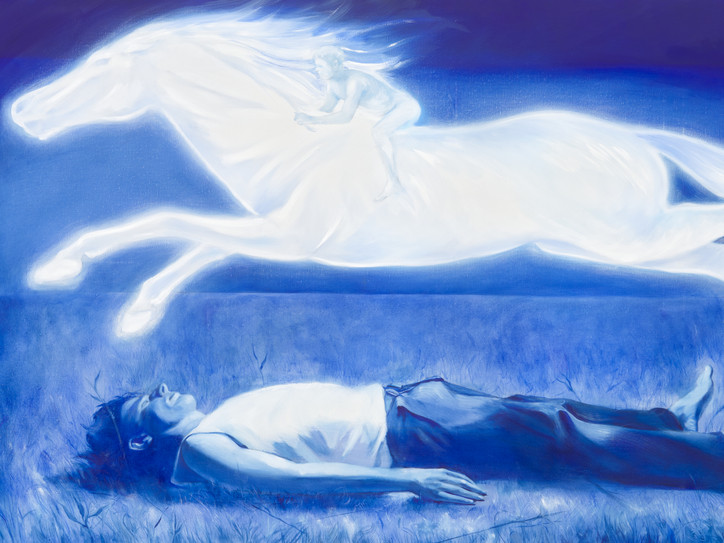
Like a spiritual cleansing?
Yeah, so when I was 24, I was going through a hard time, and I had one done. It started with a heart-to-heart, then we went into a room and the woman called all of my ancestors into the room. I lay on this table, and she starts a prayer in Spanish. She spits this water on me, burns a plant over me, and roasts my body with an egg. She then bit on my chest right above my heart and started screaming into my heart. I started hallucinating and it was really intense. After it all ended and I came to, I remember this image of a bunch of white horses running through a blue field and hearing in Spanish, Calm the ocean of your mind. The next day I was at a thrift store and I found a blue handkerchief with a bunch of white horses on it.
What came of the cleansing?
My understanding of my family was pretty limited at the time, there was a lot of pain that people didn't really want to talk about, and I also don't think I had the right questions. Through this practice, I started uncovering a lot of things. I started learning all of these things about my family being rancheros, stealing horses, my great-great-grandmother being a curandera, all of these spiritual things that have always been in my blood and in my bones. It took me kind of doing that to really ask all of the right questions.
And so, you started painting white horses.
Yeah, so the first one I ever did in 2021 is just a single horse running through this blue field. For the second one, I liked the idea of the horse acting almost like a spirit guide, jumping over me, and in this person's face, there is no fear. There's almost this gaze of admiration for the barren landscape. It was intentional to do it in this ultra-marine blue so it has a dreamlike sense, if it has too many colors, it riddles you too much with reality. It’s funny too, because I use a Flemish paint brand that makes a very specific ultramarine blue.
I wanted this to feel like that hallucination I had. It felt so cinematic that everything got silent and I went into this other place. The reason I added ‘After William Blake’ is because of his paintings of white horses. He's such an icon in terms of painting that if I didn't, it would feel a little too literal. I'd had this image ruminating for like seven years, but I just had to wait for the right time. And I love this word, limpia, because it kind of reads like Olympia which has this mythical quality to it while in Spanish it just means cleansing, or to clean. The power of language is beautiful to me in that sense.
So much can be said with one word.
